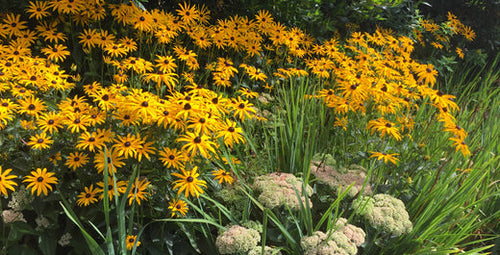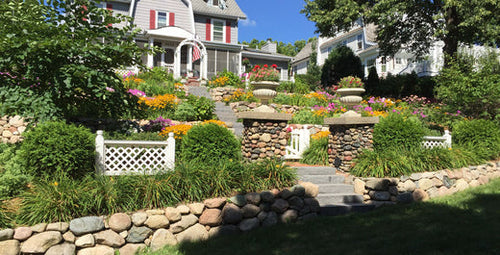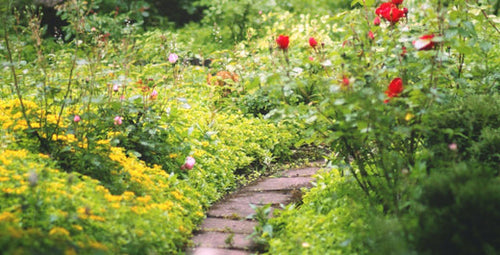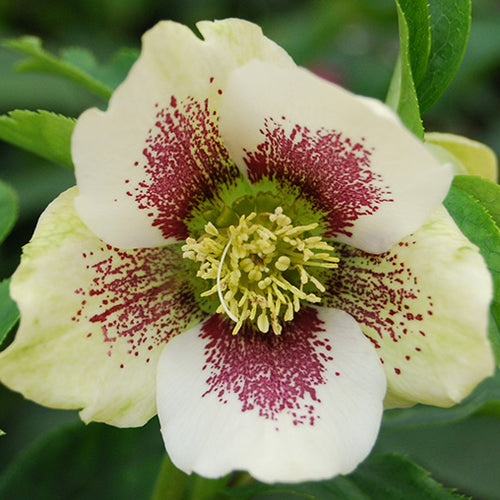Why are round objects so pleasing in a garden? Every time I see a round bed, a spherical shrub, a bed of globe amaranth (above), my eye is instantly drawn in. So, I did some research.
Explanation 1: Circles Are Simple Geometry
I like the sound of that, but as I was terrible at geometry, I’m not even sure what that statement means. So I checked Google by typing “circle” and “geometry,” and found this: “The area of a circle = PIr2, where r=the radius of the circle and pi=3.141592”.
Well that doesn’t exactly clarify things.

Explanation 2: Circles Add Good Design
Better Homes and Gardens tells me:
“Round forms, such as boxwood or barberry shrubs, for instance, add definition and stability to a mixed border. A series of mounded forms creates an undulating rhythm.”
Okay, that makes sense.

Explanation 3: Circles Are Metaphors
The circle has been a symbol since the beginning of time. The circle represents the sun, the earth, the circle of life. It represents infinity and being whole. I can see that in a round reflecting pond.
So circles represent shape, form, and meaning. Now we are getting somewhere.
I suspect I like round flowers because there are very few of them. Here’s the short list: globe amaranth, globe thistle, pincushion flower, armeria, echinops, rattlesnake master (in photo), and alliums; these all offer ball-shape blooms.
There are one-dimensional round flowers such as the disks of hardy hibiscus, bush daisy, cosmos, black-eyed Susan, and sun flower. And there’s blooms that approach ball-ish, such as lantana, mums, and dahlias.
If you are want to create a garden that has shape, form, and meaning, look no further than the perhaps the first shape you ever drew with a crayon: The circle.
Written by Karen Weir-Jimerson

















